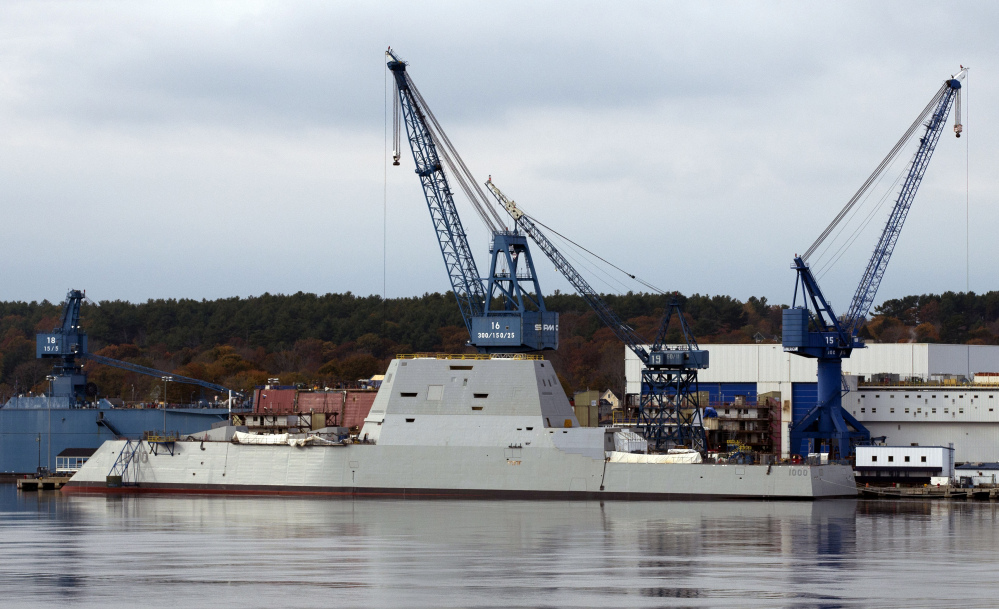BATH — Bath Iron Works is getting ready to bring fuel aboard the Navy’s biggest destroyer in preparation for firing up some of the world’s largest marine turbines this summer.
Shipbuilders will work methodically in the coming weeks to bring JP-5 military-grade jet fuel aboard the ship and flush the systems before lighting off the turbines and activating the ship’s high-tech electrical systems. It’s a complicated process for the first-in-class Zumwalt.
“Because it’s the lead ship, we’re doing everything in a very deliberate and painstakingly accurate and detailed way,” shipyard spokesman Jim DeMartini said.
Those turbines – similar to units in the Boeing 777 – won’t propel the ship. They’ll provide the grunt for generators that produce electricity that drives the ship.
Around the world, there are other electric-drive warships. But this is the first time the Navy has built a surface combatant using electric propulsion since a line of destroyer escorts in the 1940s.
For now, the Zumwalt remains a work in progress.
On a recent day, shipbuilders worked throughout the 610-foot-long vessel, testing various systems using land-based electricity. There were wires dangling, false ceilings, and tools and portable equipment throughout the interior.
Rolls-Royce modified its Boeing 777 turbo fan engines, each of them enclosed with an automated fire suppression system deep in the belly of the ship. Banks of high-voltage electrical switches and voltage converters lend the appearance of a power plant.
“It’s the heart of the ship,” said shipyard program manager Todd Estes, who served as an engineering chief aboard a Spruance-class destroyer before leaving the Navy.
The ship itself will boast plenty of new technologies: an angular shape to reduce radar signature; a gun with rocket-propelled projectiles; new radar and sonar systems; missile launchers that deflect explosions outward; heavy use of automation; and a new hull shape. All told, there are 2.3 million feet of electric cabling and 1,300 automated valves aboard the ship, Estes said.
The ship also has tremendous electrical capabilities. The two main generators, along with two auxiliary units, can produce 78 megawatts, enough electricity for about 10,000 homes.
All the power can be diverted to where it’s needed, ship propulsion, or weapons or radar.
Down the road, there’s enough juice to operate an electromagnetic rail gun, a futuristic weapon designed to fire projectiles at hypersonic speeds, said Norman Friedman, author of books including “U.S. Destroyers and Illustrated Design History” and the U.S. Naval Institute’s “Guide to World Naval Weapon Systems.”
Such a system could be a game-changer in the future, Friedman said. “The thing that sold electric drive was the promise of electric weapons like the rail gun,” he said.
Send questions/comments to the editors.



Comments are no longer available on this story